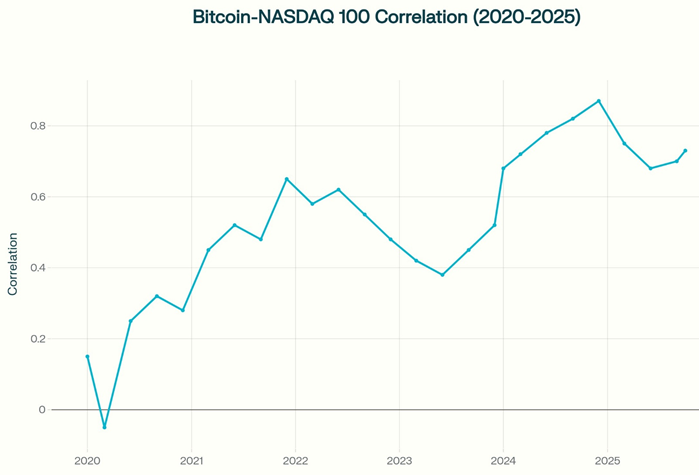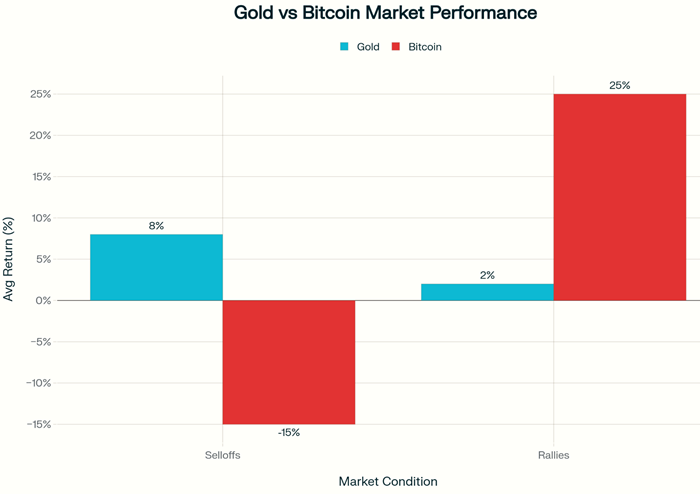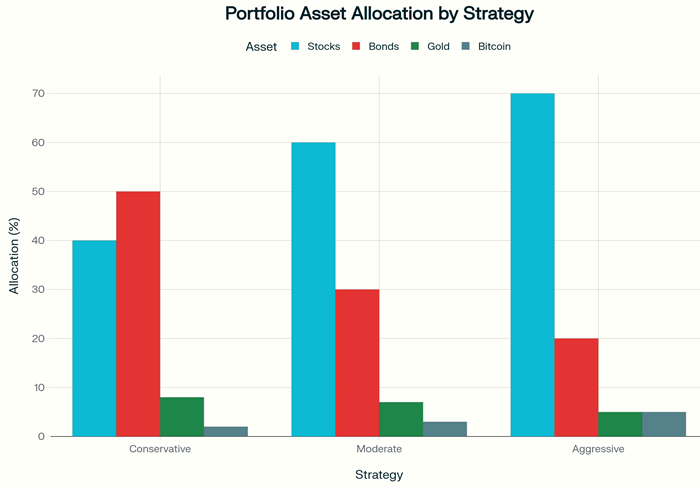Ford to repurpose Kentucky EV battery plant for energy storage - Bloomberg
Last Friday’s cryptocurrency market meltdown wiped out $19.3 billion and forced investors to confront an uncomfortable truth about Bitcoin’s real nature. This was the largest single-day liquidation event in crypto history.
As President Trump announced new 100% tariffs on Chinese imports, markets reacted swiftly. But the divergence seen between Bitcoin and gold was unmistakable: Bitcoin crashed 15% from its recent all-time high of $126,000, while gold, which had just broken through $4,000 per ounce, held steady and even attracted more safe-haven flows. For average investors trying to build resilient portfolios, this split-screen moment matters more than most realize.
The Correlation Question
For years, Bitcoin supporters have called it "digital gold," suggesting it could serve as a modern safe haven and inflation hedge. However, reality has become more complicated. Bitcoin’s correlation with the NASDAQ 100 has climbed dramatically, reaching 0.87 in 2024 (highly correlated). Bitcoin now moves very closely with tech stocks.

Bitcoin’s increasing correlation with NASDAQ 100 shows its evolution into a risk asset
This wasn’t always the case. Before 2021, Bitcoin showed little correlation with traditional markets, really supporting its reputation as an alternative asset. But as major institutions embraced Bitcoin through ETFs and corporate treasury holdings, its behavior has changed. Research shows that institutional investors now hold over 40% of the global Bitcoin supply, and that concentration has tied Bitcoin’s fate to broader market sentiment.
That means, when the Federal Reserve adjusts interest rates or economic data disappoints, Bitcoin increasingly reacts like a high-growth tech stock rather than a defensive asset. And this transformation has important implications for portfolio construction.
What Gold Still Does Differently
Gold’s performance during market stress still justifies its centuries-old reputation. Central banks purchased record amounts of gold in 2024 and 2025, and the metal has gained 53% year-to-date. During periods of geopolitical tension, currency concerns, or market volatility, gold consistently behaves as expected. It rises when investors seek safety.

How gold and Bitcoin perform during different market conditions
BlackRock research indicates that traditional portfolios typically allocate 5-10% to gold as a diversifier and volatility hedge, based on decades of performance data. Gold maintains near-zero long-term correlation with equities and shows slight negative correlation with the U.S. dollar, providing genuine diversification benefits.
The Institutional Effect
The institutionalization of Bitcoin through ETFs has created a deep paradox. It’s making crypto accessible to mainstream investors, but it has also fundamentally changed Bitcoin’s characteristics. Registered investment advisors and wealth managers now hold roughly 50% of Bitcoin ETF assets, meaning Bitcoin trades increasingly reflect institutional positioning in tech stocks and other risk assets.
Studies confirm that as Bitcoin ETFs gained adoption, the cryptocurrency’s sensitivity to macroeconomic factors intensified. Inflation expectations, interest rates, and liquidity measures all trigger Bitcoin moves now. This means Bitcoin responds to the same triggers that move your stock portfolio, reducing its effectiveness as a true diversifier.
What This Means for Your Portfolio
For average investors, the key question isn’t whether Bitcoin is "good" or "bad." You need to think about it realistically. Portfolio experts suggest treating Bitcoin more like a position in high-growth tech stocks than a safe-haven alternative.
BlackRock recommends that investors comfortable with Bitcoin’s volatility consider allocations of 1-2% maximum, roughly equivalent to the portfolio risk of holding a single Magnificent Seven tech stock. Going beyond that range substantially increases overall portfolio volatility. More aggressive investors might allocate up to 5%, but research suggests this should come from the growth portion of a portfolio, not the defensive allocation.
Sample portfolio allocations for different investor risk profiles
The October 2025 crash offered harsh lessons about leverage. Many traders were using 10x, 20x, or even 50x leverage, amplifying losses catastrophically. For long-term investors building wealth, this speculative behavior represents the opposite of prudent portfolio construction.
A Balanced Approach
Despite Bitcoin’s challenges as a safe haven, it still offers potential portfolio benefits when sized appropriately. Research from Galaxy Digital shows that portfolios with 1-5% Bitcoin allocations historically achieved improved risk-adjusted returns compared to traditional 60/40 stock-bond portfolios. The key here is understanding that Bitcoin contributes growth potential and diversification, but not stability.
Some advisors recommend a "barbell" approach: maintaining a larger, stable gold allocation for genuine crisis protection while holding a smaller Bitcoin position for its asymmetric upside potential. This framework acknowledges both assets’ strengths without expecting Bitcoin to behave like gold.
Looking Ahead
The October 2025 crash revealed that Bitcoin has evolved, whether supporters like it or not. As institutional ownership grows and ETFs integrate crypto into mainstream finance, Bitcoin’s correlation with traditional markets will likely persist or even strengthen.
This doesn’t make Bitcoin worthless, but it does require investors to recalibrate expectations. Bitcoin may offer long-term value as a technological innovation or alternative monetary system, but its day-to-day behavior increasingly resembles a volatile tech stock, not a defensive haven.
For the average investor, the lesson is clear: build your portfolio foundation with proven diversifiers like bonds and gold, then consider Bitcoin as a small, speculative allocation only if your risk tolerance and time horizon allow. Last Friday’s crash showed that when markets get rough, gold still plays defense while Bitcoin joins the selloff. That’s not criticism. It’s just the reality that should inform smarter portfolio decisions.
